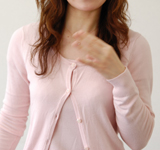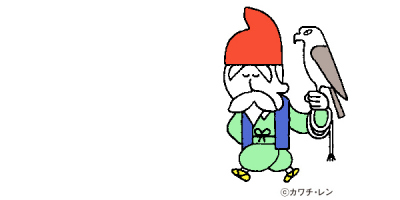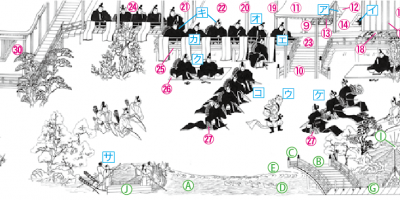
As we discussed last time, the vertical one-handed wave is basically an “adult” refusal technique. Continuing this discussion, I should note the relatively “adult” behavior of some “young ladies.”
For example, if complemented on her appearance (“Miss So-and-so, you’ve gotten so pretty!”) a “young lady” might bashfully perform the vertical one-handed wave, saying “Ie ie” (No, no.) with a falling intonation in a display of modesty. As a further example, a “young lady” might furtively use the vertical one-handed wave from a distance to tell someone about to say something inappropriate: “No, no! I don’t want you to talk about that here!” This is why I qualified my statement by saying that the vertical one-handed wave is basically an “adult” refusal technique.
However the “young lady’s” technique is the technique of a “young lady.” The “adult technique” is, in the end, different. The “adult” vertical one-handed wave is not quite a chopping motion, as in the previously discussed manga, but the wrist is supple, straight, and gracefully extended. In the “young lady’s” hurried gesture, the wrist is limp, and the fanning motion follows an inconsistent trajectory. The fingertips are slightly bent too, reducing the gesture’s elegance.
In fact, the “young lady” knows perfectly well that her gesture is inelegant, and that is actually her aim. Perhaps she feels that waving with a limp wrist using a sporadic motion, with fingertips spread and bent is more suitable for a “young lady” and that any elegance in the gesture would give the game away, although she is probably not normally clearly aware of this.
At any rate, a “young lady” might also pucker her mouth and childishly say “…nan desuuuu”(1) . In all truth, she never spoke like this when she was a child. Maybe her grade school teacher even praised her: “You’re always on the ball!” What happened to that girl? She begins using expressions like “desuuuu” after she has grown into a “young lady” and begun secretly affecting immaturity and innocence.
When she covers her mouth to laugh(2) , she uses the same affectation. An “adult” (“madam”) would supplely extend her fingertips in a graceful gesture. This doesn’t look youthful. It isn’t cute. So, the “young lady” covers her mouth with fingertips spread and bent. This gesture shows she has an ulterior motive. Or at least, that’s how it looks to old guys like me.
“Youth” has come to mean “cute,” “unrefined,” and “amateurish.” But amateurishness is not something that can be intentionally constructed; it normally is natural and unaffected. Whether this is in fact the case is another problem however (see parts 2 and 3). In any case, keep your wrist limp, and wave sporadically with fingers spread and bent. This is how “young ladies” do the vertical one-handed wave.
* * *









(1) The expression “…nan desuuuu” usually makes the statement explanatory. E.g. “Sou nan desu” (that’s how it is/that’s how things stand). Drawing out the final vowel in the verb desu is an affectation, used to make one’s mode of speech cuter. It is considered “childish” sounding, although, as pointed out here, children rarely actually use it.
(2) Many (though by no means all) Japanese women tend to cover their mouths when laughing, apparently because it is considered more demure to do so.